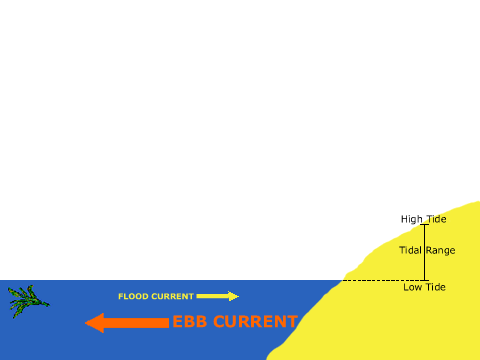Tidal CurrentsWatching the tide "come in" one gets the impression that ocean water is moving in and out along the shoreline. The landward and seaward movement are a result the Earth rotating into and out of a semi-fixed tidal bulge as it changes its position relative to the Sun and Moon. Any point on Earth rotates through two bulges every 24 hours and 50 minutes producing two high tides and two low tides called each day. The difference in height between consecutive high and low tides is the tidal range. During a high tide water moves landward as a flood current. During low tide water recedes seaward as an ebb current. The two high tides and the two low tides do not have to be of equal height because the angle between the Moon and Earth changes each day. The tidal range is the difference in height between high and low tide Figure 21.9 Flood and Ebb Currents
|
